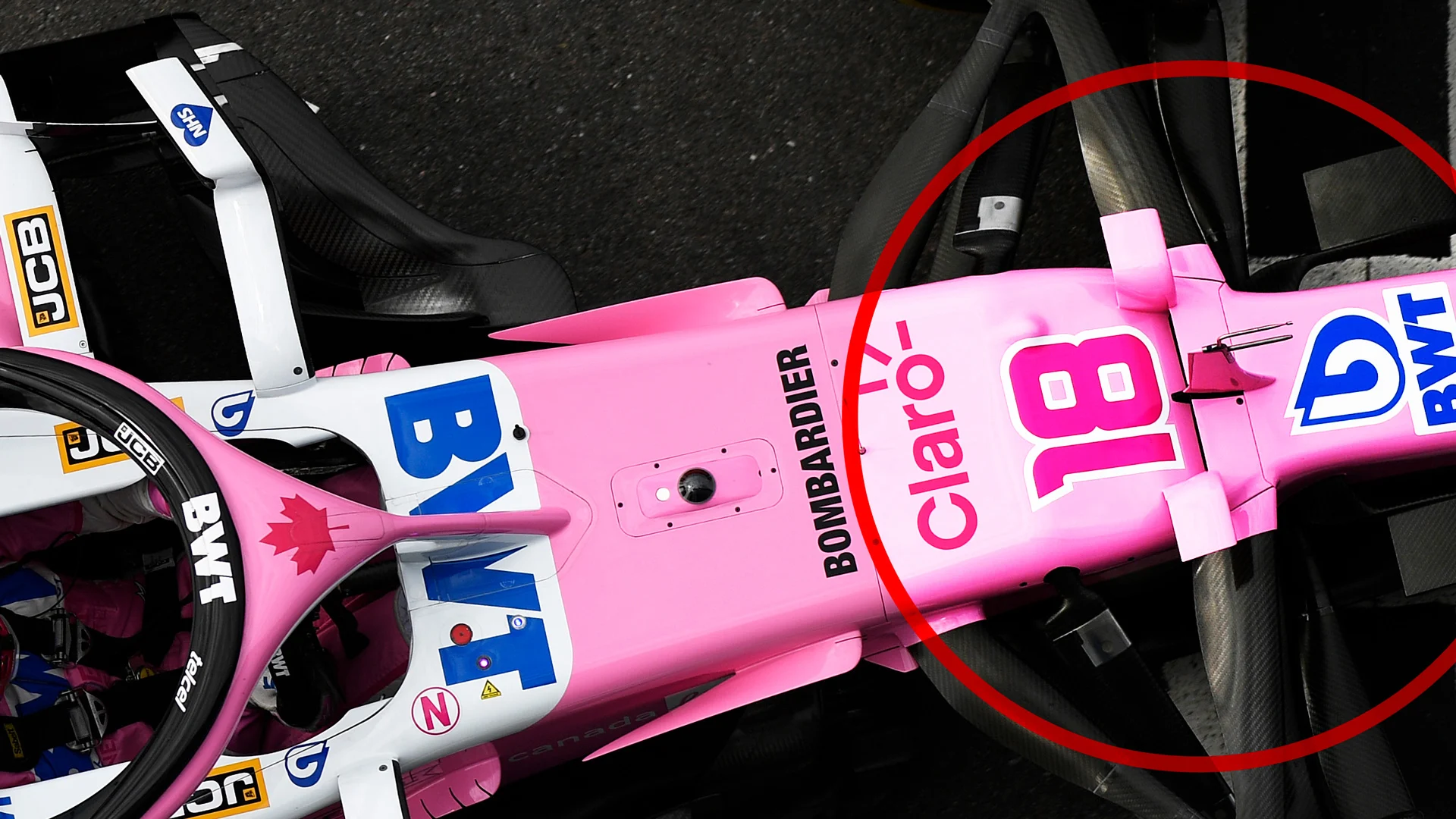Racing Point’s RP20 and the Mercedes W10 are similar, but not identical – here’s where they differ


It’s easy to forget amid the controversy surrounding the close similarity of the Racing Point RP20 to last year’s Mercedes W10 that the two cars aren’t actually identical. The external aerodynamic surfaces are a close copy, but there are several points of differentiation, as F1 technical expert Mark Hughes explains...
Mechanically, the two cars are quite different at the front. The Mercedes uses hydraulic actuation for its inboard heave spring whereas the Racing Point sticks with the more traditional mechanical linkages. Comparing the images below shows this quite clearly.
The hydraulic spring allows a wider variation of modes and greater fidelity but is banned as from next year when all springs must be mechanical.
Also at the front of the car, Racing Point favours the S-duct in the nose (as you can see in the image below), whereas the Mercedes never had this feature.
The S-duct helps accelerate the under-nose airflow and vents it on the nose’s upper surface where it helps limit the aerodynamic lift that is countering the downforce.
But its advantages are marginal and it’s likely that the Mercedes’ denser packaging to accommodate the suspension’s hydraulic components made the S-duct unfeasible on the W10.

Although the front brake ducts are identical, the drums surrounding the disc to control the aerodynamics through the wheel – which affects the outwash around the wheel – are quite different.
The Mercedes drum can be seen to be more all-enclosing whereas that of the Racing Point is exposed in places (as can be seen by the visibility of the ‘Brembo’ lettering on the brake calliper). The rear drums, however, appear to be identical.
This front drum differences and the S-duct detail suggest that the aerodynamics around each car are working in a slightly different way. This is further suggested by the fact Racing Point tends to run their car with a slightly greater rake angle than Mercedes did with their W10.
There’s little doubt that the two cars bear an uncanny similarity and Racing Point make no claims otherwise. But they are not identical.
READ MORE: Under the skin of Renault's protest of Racing Point's RP20

Next Up
Related Articles
.webp) ExclusiveZhou on why he has ‘high trust’ in Cadillac project
ExclusiveZhou on why he has ‘high trust’ in Cadillac project F1 Arcade announces opening date for new Atlanta venue
F1 Arcade announces opening date for new Atlanta venue Antonelli picks standout moments from rookie season
Antonelli picks standout moments from rookie season.webp) Quiz10 questions on McLaren World Champions
Quiz10 questions on McLaren World Champions/TWGMS-F1-Announcement-1298%20(1)%20(1).webp) ExplainedEverything you need to know about Cadillac’s entry to F1
ExplainedEverything you need to know about Cadillac’s entry to F1.webp) Where are all of Red Bull’s F1 graduates now?
Where are all of Red Bull’s F1 graduates now?